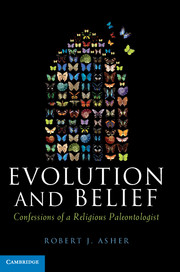Book contents
- Frontmatter
- Contents
- Acknowledgments
- Prologue
- One Science and Religion
- Two Evolution as a Science
- Three Characters and Common Descent
- Four The Fossil Record
- Five The Roots of Mammals
- Six A Brief History of Elephants
- Seven Whales are no Fluke
- Eight Creationism
- Nine DNA And The Tree pf Life
- Ten DNA and Information “Creation”
- Eleven Biology and Probability
- Twelve Evolution, Education, and Conclusions
- Notes
- Bibliography
- Index
Three - Characters and Common Descent
Published online by Cambridge University Press: 05 March 2012
- Frontmatter
- Contents
- Acknowledgments
- Prologue
- One Science and Religion
- Two Evolution as a Science
- Three Characters and Common Descent
- Four The Fossil Record
- Five The Roots of Mammals
- Six A Brief History of Elephants
- Seven Whales are no Fluke
- Eight Creationism
- Nine DNA And The Tree pf Life
- Ten DNA and Information “Creation”
- Eleven Biology and Probability
- Twelve Evolution, Education, and Conclusions
- Notes
- Bibliography
- Index
Summary
From our time-bound perspective, humans are capable of observing only a snapshot of life. If the Darwin–Wallace theory is true that over time one species of organism has given rise to others (an idea known as “common ancestry”) via natural selection, then a full appreciation of species through time should reveal examples of animals that combine features from what we now categorize as other, distinct organisms. A different way of phrasing this very important concept is as follows: the features that we see defining certain animals (like the mother’s milk of mammals, the baleen of blue whales, the shells of turtles, or the feathers and beaks of birds) appear on the Tree of Life independently of any specific animal that we would recognize today because of those features.
As a logical correlate of the common ancestry entailed in natural selection, the anatomical structure we recognize as “feather” has an independent origin relative to the first appearance of animals that anyone today would call “bird.” Relatedly, the common ancestry required by natural selection predicts that such animals (e.g., a feathered non-bird) possessed characters (e.g., teeth) that we associate with other groups. Such animals may be rightfully dubbed “intermediates” in the sense that they mix features we see as exclusive to animals that seem today to be well defined. No bird alive today lacks feathers or has teeth, just as no mammal alive today has more than a single bone in its jaw or lacks mother’s milk. But common ancestry predicts that this was not the case for all of the ancestors of birds or mammals, and that considerable uncertainty may therefore complicate the decision as to when the first “bird” or “mammal” first appeared in the fossil record.
- Type
- Chapter
- Information
- Evolution and BeliefConfessions of a Religious Paleontologist, pp. 42 - 62Publisher: Cambridge University PressPrint publication year: 2012



